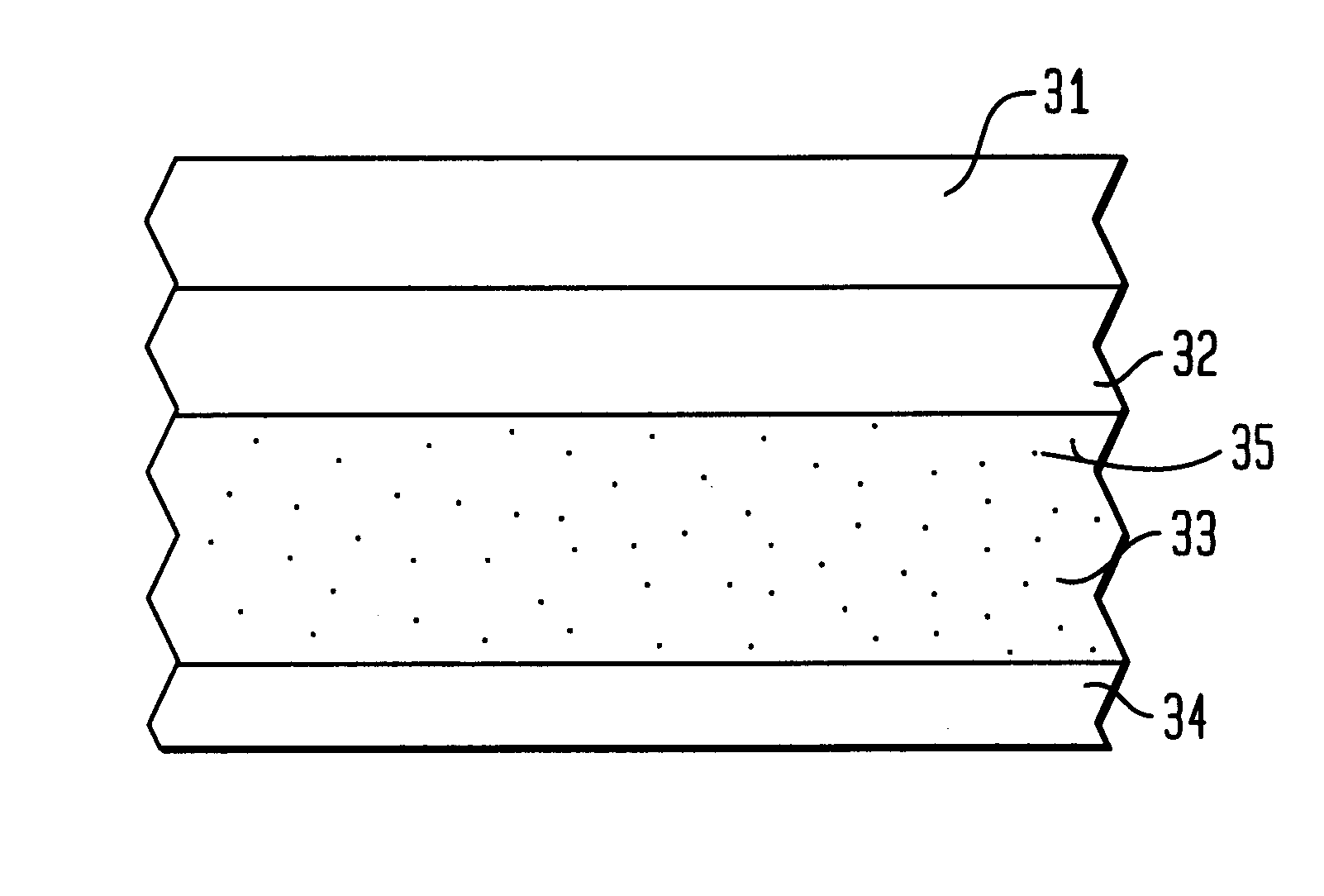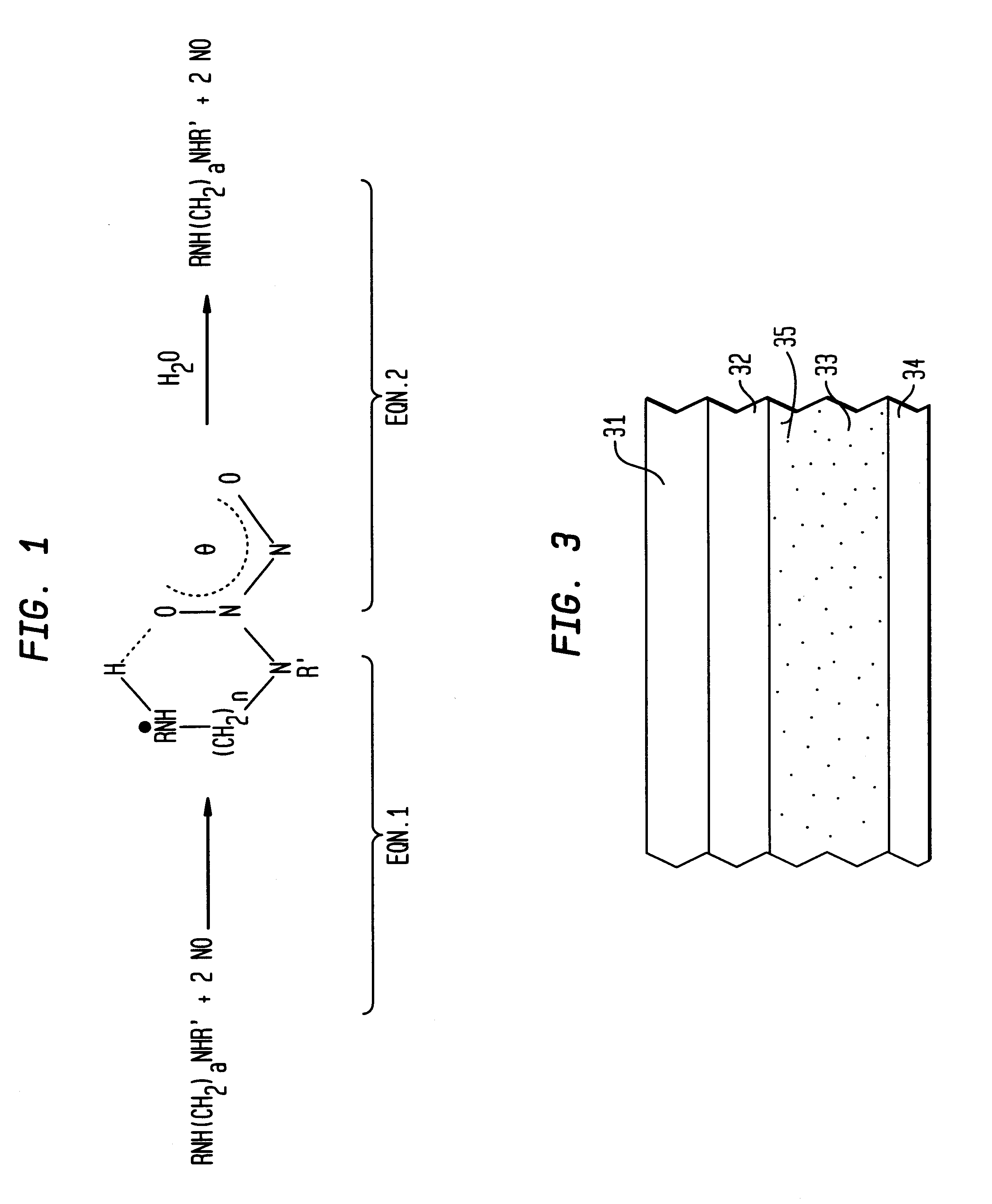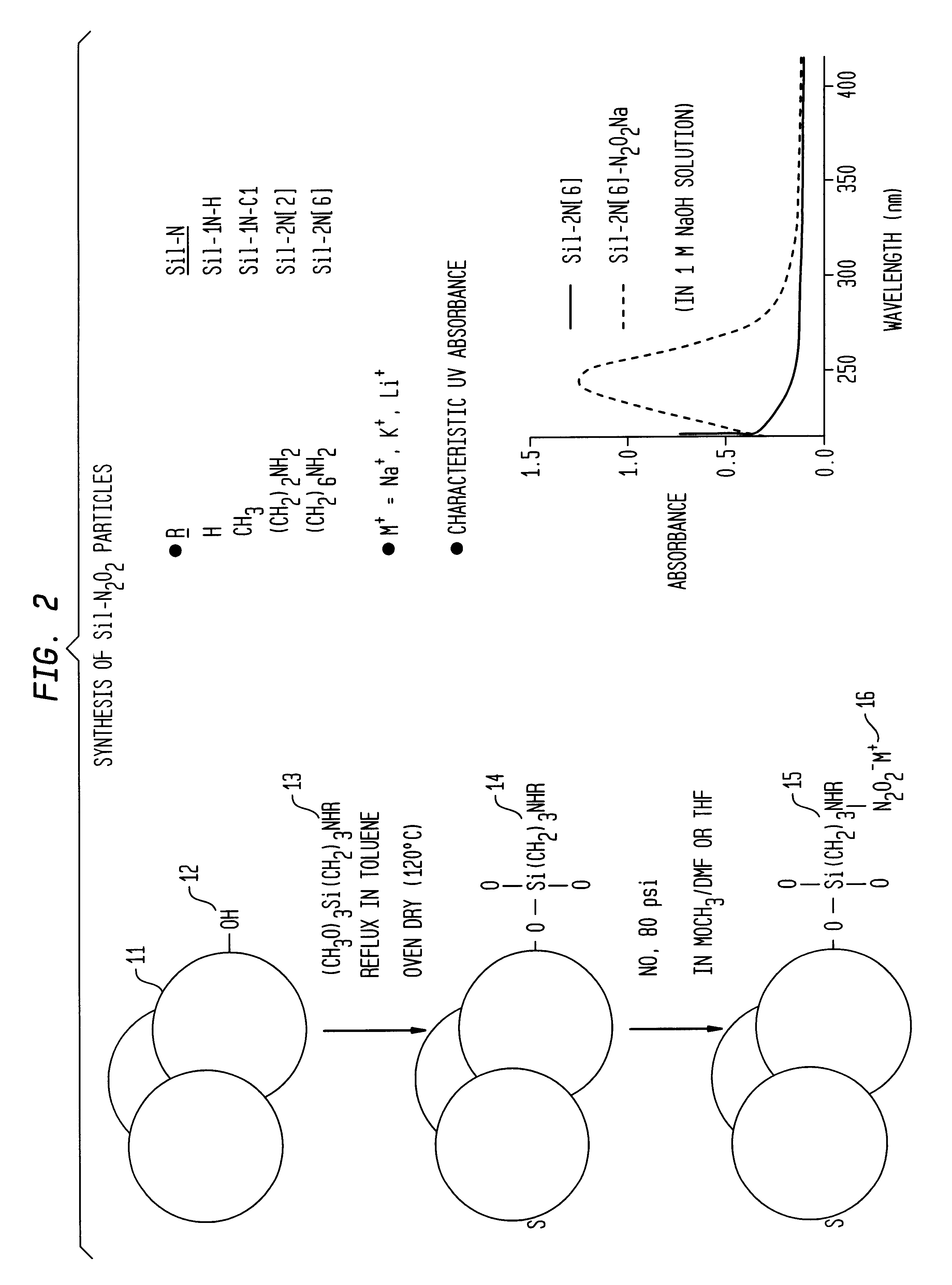Nitric oxide-releasing polymers incorporating diazeniumdiolated silane derivatives
- Summary
- Abstract
- Description
- Claims
- Application Information
AI Technical Summary
Benefits of technology
Problems solved by technology
Method used
Image
Examples
Embodiment Construction
In an illustrative method of making embodiment of the invention, as shown in FIG. 2, fumed silica 11(Cab-O-Sil EH-5, surface area 380 m2 / g, Cabot, Tuscola, Ill.) was suspended in toluene and refluxed under stirring. Fumed silica has reactive silanol groups 12 on its surface. In this specific embodiment, there are about 2.5 to 4.5 silanol groups / nm2 on the surface.
An equivalent amount of an amino silane coupling agent 13 in toluene was added to the fumed silica suspension. The mixture was further refluxed and stirred overnight to produce derivatized fumed silica 14. In this particular embodiment, the amino silane coupling agent 13 has the formula: (CH3O)3Si(CH2)3)NHR where R may be H, CH3, (CH2)2NH2, and (CH2)6NH2. Of course, in the embodiment where R is H, the amino silane is a primary amine. As will be seen from the discussion hereinbelow, particularly preferred coupling agents are the latter three, or N-methylaminopropyl-trimethoxysilane, N-(2-aminoethyl)-aminopropyl-trimethoxysil...
PUM
| Property | Measurement | Unit |
|---|---|---|
| Percent by mass | aaaaa | aaaaa |
| Percent by mass | aaaaa | aaaaa |
| Percent by mass | aaaaa | aaaaa |
Abstract
Description
Claims
Application Information
 Login to View More
Login to View More - R&D
- Intellectual Property
- Life Sciences
- Materials
- Tech Scout
- Unparalleled Data Quality
- Higher Quality Content
- 60% Fewer Hallucinations
Browse by: Latest US Patents, China's latest patents, Technical Efficacy Thesaurus, Application Domain, Technology Topic, Popular Technical Reports.
© 2025 PatSnap. All rights reserved.Legal|Privacy policy|Modern Slavery Act Transparency Statement|Sitemap|About US| Contact US: help@patsnap.com



